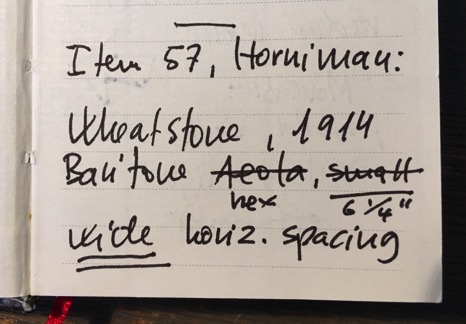After 12 years of playing (an estimate of 5.500 hours), building and modifying, the conclusion is clear, at least to me: this is a new instrument. It feels and behaves that way.
The secret lies in the combination of the following characteristics:
• A wider horizontal spacing between buttons: 15.5 mm
(“normal” Wheatstone horizontal spacing ≈ 12.4 mm)
• A wider vertical spacing between buttons: 12.6 mm
(“normal” Wheatstone vertical spacing ≈ 10.4 mm)
• The buttons travel all the way down to the end plate
• No thumb strap and 4th finger rest, instead:
• An angled hand strap - not to be confused with English concertina wrist straps
It’s tempting to call them “angloed” hand straps - because of how they behave. There is full control of the bellows pressure, thus full control of dynamics.
• Angled hand rests
These are a bit “undefinable” - they are there, but the don’t support very much and there is no lack of support (if that makes any sense).
So - wider horizontal spacing, is that a new thing?
It’s not that the folks at Wheatstone wouldn’t listen:
Around 2009 I was in London and visited the Horniman Museum. In the little, poorly lit concertina display, one instrument caught my eye. See what I wrote in my little note book during the visit:

A 1914 Wheatstone baritone (and small - 6 ¼” !). But even from a distance it differed from the other instruments in the display: it had wider horizontal spacing. Must have been a customer with big hands...
I actually went through the year 1914 pages in the Wheatstone ledgers, and even though there were a handful of (hex) baritones, none had any comments that could be interpreted as having something to do with button spacing. But trust me - I can spot a wider horizontal spacing from far away!!
The (non-wobbling) WiMo in Northern Scandinavia (Finland), The Irish Festival of Oulu 2017:

Photo: © Kari Arontie, https://kuvakaro.kuvat.fi/ - Kiitos, Kari!
- and the WiMo in the kitchen (without a camera man...):
Next Previous